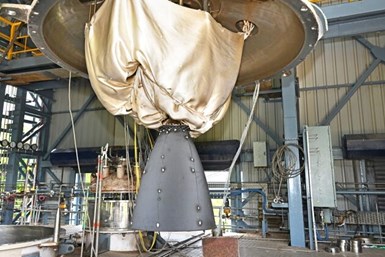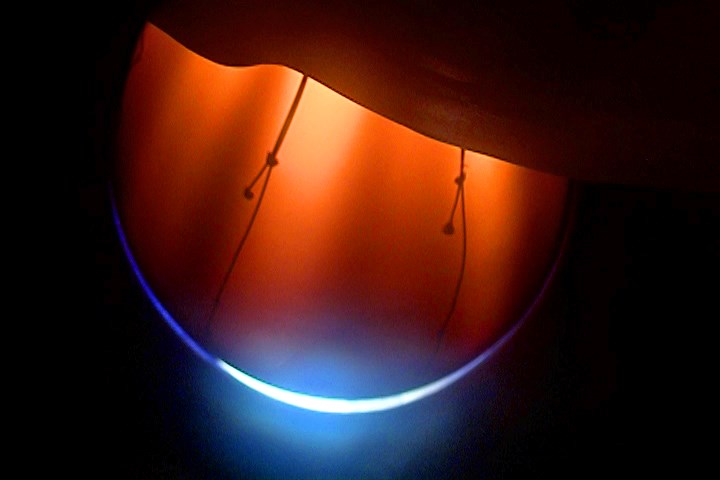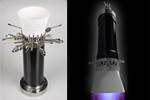ISRO C/C composite nozzle development enhances rocket engines
Durable composite nozzle can replace metal versions for mass reduction and payload capacity boost in launch vehicles.
Share

C/C composite nozzle atached to PS4 engine. Source (All Images) | ISRO
The Indian Space Research Organization (ISRO, Bengaluru, India) has recently developed a lightweight carbon-carbon (C-C) nozzle for rocket engines. This accomplishment by Vikram Sarabhai Space Centre (VSSC) promises to enhance the vital parameters of rocket engines, including thrust levels, specific impulse and thrust-to-weight ratios, thereby boosting the payload capacity of launch vehicles.
VSSC, known for its space research, has leveraged advanced materials like C-C composites (see sidebar) to create a nozzle divergent that offers optimal properties. By using processes such as the carbonization of green composites, chemical vapor infiltration and high-temperature treatment, the resulting nozzle features low density, high specific strength and high stiffness, capable of retaining mechanical properties even at elevated temperatures.
A key feature of the C-C nozzle is its silicon carbide anti-oxidation coating, which extends its operational limits in oxidizing environments. This not only reduces thermally induced stresses but also enhances corrosion resistance, enabling extended operational temperature limits in hostile environments.
The nozzle’s development is significant, particularly for the ISRO’s workhorse launcher, the Polar Satellite Launch Vehicle (PSLV). The PS4, the fourth stage of the PSLV, currently employs twin engines with nozzles made from Columbium alloy. However, by replacing these metallic divergent nozzles with C-C counterparts, a mass reduction of approximately 67% can be achieved. This substitution is projected to increase the payload capability of the PSLV by 15 kilograms.

PS4 engine nozzle divergent development hot test was successfully conducted for a duration of 200 seconds at LUS-TF IPRC in February 2024.
The C-C nozzle divergent have been tested, a collaborative effort involving Liquid Propulsion Systems Centre (LPSC) which designed and configured the test, and IPRC which conducted the test’s instrumentation and execution. In March 2024, a 60-second hot test was conducted at the High-Altitude Test (HAT) facility in ISRO Propulsion Complex (IPRC) in Mahendragiri, confirming the system's performance and hardware integrity. Subsequent tests, including a 200-second hot test in April, further validated the nozzle's capabilities, with temperatures reaching 1216 Kelvin, matching predictions.
Related Content
-
Orbital Composites wins award from U.S. Space Force to build space factories for antennas
Partners Axiom Space, Northrop Grumman Space Logistics and Southwest Research Institute will help advance ISAM technologies for kilometer-scale LEO antennas, space stations and GEO applications, targeting space factory in 3-5 years.
-
Composite molding compound replaces Invar for lightweight small satellite structures
Patz Materials and Technologies and Lawrence Livermore National Laboratory developed a new monolithic optics housing with 80% less weight, near-zero CTE and the high-volume manufacturing required for commercial space.
-
Automated robotic NDT enhances capabilities for composites
Kineco Kaman Composites India uses a bespoke Fill Accubot ultrasonic testing system to boost inspection efficiency and productivity.













